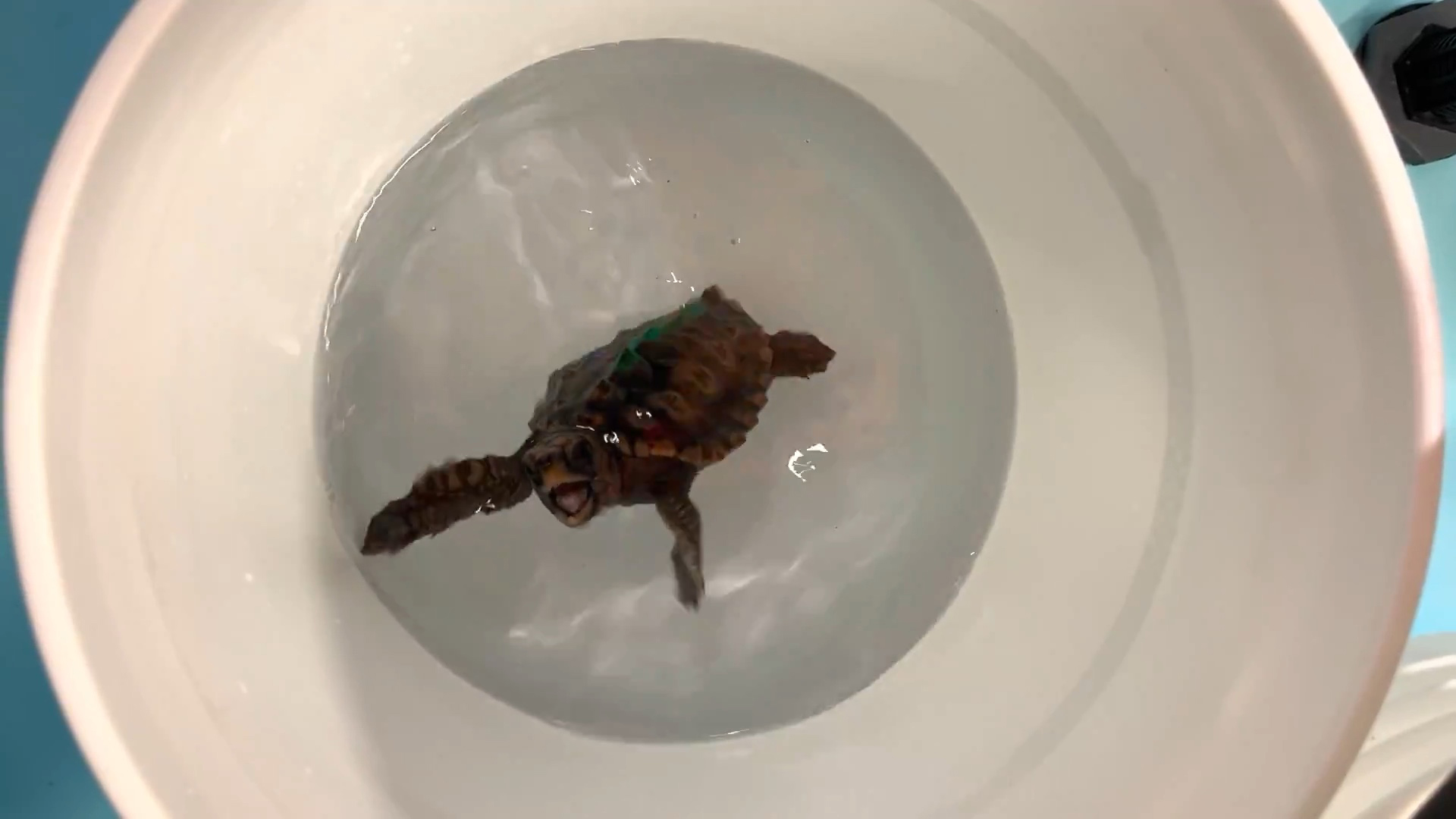Media release
From:
Hatchling loggerhead turtles feel the Earth’s magnetic field when using a magnetic map
Turtles navigate their inbuilt magnetic map of the world by feeling the magnetism
Loggerhead turtles are able to sense the Earth’s magnetic field in two ways, but it wasn’t clear which sense the animals use to detect the magnetic field when navigating using the magnetic map they are born with. Now researchers from University of North Carolina at Chapel Hill, USA, reveal in Journal of Experimental Biology that hatchling loggerhead turtles feel the Earth’s magnetic map to tell them where they are on their epic migration routes.
Loggerhead turtles are able to sense the Earth’s magnetic field in two ways, but it wasn’t clear which sense the animals use to detect the magnetic field when navigating using the magnetic map they are born with. Now researchers from University of North Carolina at Chapel Hill reveal in Journal of Experimental Biology that hatchling loggerhead turtles feel the Earth’s magnetic map to tell them where they are on their epic migration routes.
Setting off from the beach of their birth, hatchling loggerhead turtles embark on some of the world’s most impressive migrations, covering thousands of kilometres over decades. But the intrepid youngsters are not without direction. Equipped with the ability to sense the Earth’s magnetic field, loggerhead hatchlings are born with a compass, which tells them in which direction they are travelling, and a map of the planet’s magnetic field that tells them their location, to navigate successfully.
There are two possible ways for animals to sense the Earth’s magnetic field: one where light-sensitive molecules are affected by the magnetic field, which could allow animals to see the field, and a second where tiny magnetite crystals embedded in the animal’s body move in the field to allow them to feel the magnetism. But it wasn’t clear which of these two mechanisms might tell turtles where they are located during their extraordinary odyssey, and scientists at the University of North Carolina at Chapel Hill wanted to know.
Fortunately, Kayla Goforth, Catherine Lohmann, Ken Lohmann and colleagues from the university had recently discovered that hatchling turtles can learn to associate the magnetic field found at a location with the arrival of food. But instead of learning to salivate like Pavlov’s dogs, loggerhead turtle hatchlings ‘dance’ to show their recognition, tilting their bodies out of the water, opening their mouths and waggling their front flippers.
By locating the youngsters in a specific magnetic field while feeding them, the researchers were able to train the hatchlings to perform their dance when transferred later to the same magnetic field.
‘They are very food motivated and eager to dance when they think there is a possibility of being fed’, laughs Alayna Mackiewicz from the University of North Carolina at Chapel Hill.
The team then realised that they could use this clever trick to tell them whether the turtles were potentially seeing, or feeling, the Earth’s magnetic field if they zapped the hatchlings with a strong magnetic pulse that temporarily disabled their ability to feel the field. If the zapped hatchlings stopped dancing, then they were feeling the magnetic field, but if they continued to dance, then they were using some other sense to detect the magnetic map.
But training the hatchlings was no mean feat. ‘It’s really fun but takes up quite a bit of time’, says Mackiewicz, who, with Dana Lim (University of North Carolina at Chapel Hill), spent 2 months feeding 8 newly hatched loggerhead youngsters in the magnetic field that is found around the Turks and Caicos islands, so they would learn to dance when they experienced the magnetic field later. In addition, the duo trained other hatchlings to recognise the magnetic field near Haiti.
Then, Mackiewicz and Lim transferred each youngster to a large metal coil that produced a strong magnetic pulse that would temporarily disable the hatchling’s ability to feel a magnetic field. After that, they placed each youngster in the magnetic field that they had been trained to recognise to find out whether they had stopped dancing.
Sure enough, after being zapped, the turtles danced less, suggesting that they were feeling the magnetic field, which tells them where they are on their map, and not seeing it.
The team admits that the hatchlings may also use other senses to tell them where they are located on their global magnetic map, but feeling the field is an essential component of their ability.
And, as the youngsters are known to use their additional magnetic sense – which may enable them to see magnetic fields – as a compass that tells them in which direction they are travelling, it is clear that the two senses complement each other, allowing the youngsters to identify their location and set a bearing wherever they might be.
*************
Multimedia





 International
International


